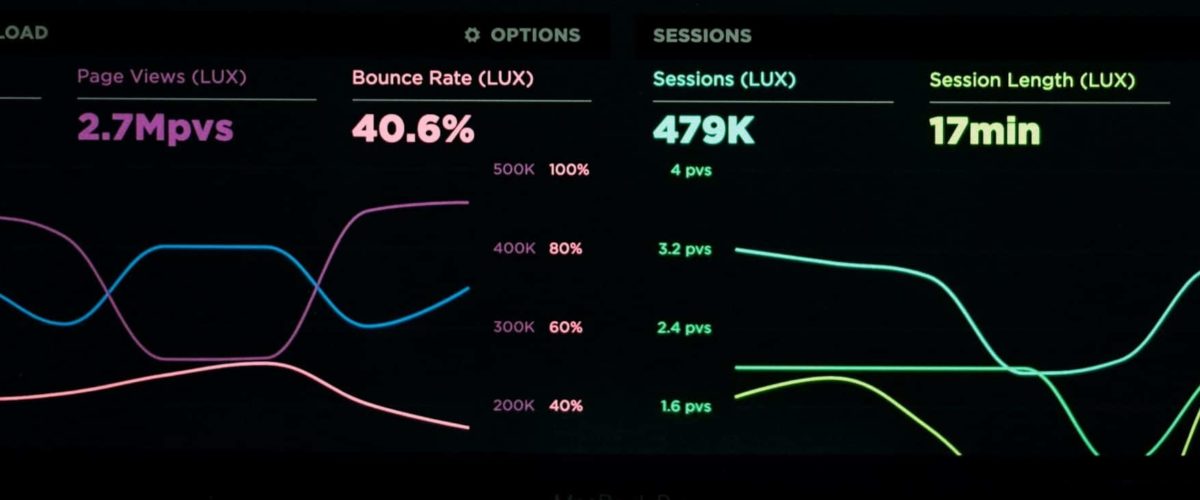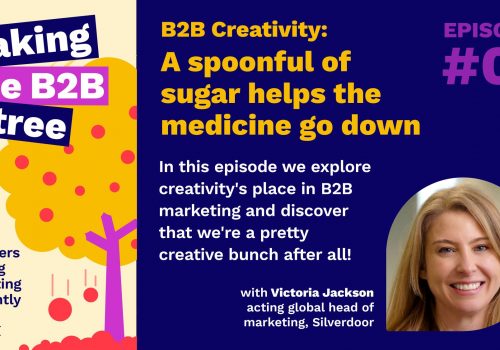Rob Jones is CEO of Qbase, one of the UK’s leading providers of data services – with a particular focus on extracting value from data in a marketing environment. I asked Rob what makes data so crucial to B2B marketing success.
Tell me a little about your background
I studied marketing at Uni, then went to work in local government for a training and enterprise council. Then I moved into education marketing for a large FE College, followed by an international IT technical training provider. From there it was into tech hardware marketing roles – both B2B and B2C.
In this latter role there was increasing amounts of data moving around the business – everything from website interactions to call rates to thousands of product SKUs. With over 15,000 customers on the B2B side of the business the focus was shifting from traditional marketing to a more data-driven approach such as one-to-one pricing and customer journeys. We started to get to grips with how more insight could help us sell more, more easily.
Then I joined Qbase – some years back now. The business was well ahead of its time in terms of the things it was doing with data for clients; this was before the world had fully realised the true power of data. I started to learn about data modelling techniques, and how to personalise marketing for better results and impact.
Why is data so important in marketing?
Data underpins all marketing disciplines. Every marketing action we take produces data but also relies on data for success. Each time we use that data we make increasingly informed decisions about the next marketing action.
What’s required is a sound data strategy, to ensure data is being collected, organised, analysed and utilised to make the right decisions – whether that’s identifying opportunities, improving ROI or something else. And the most important aspect of data in marketing is the ability it gives you to put the customer at the heart of the decisions you make.
What do you think the secret to effective use of data in B2B marketing is?
There is no real secret. The most important thing is keeping on top of things as data grows all the time. Again, data strategy is crucial. It all starts with good governance and ensuring data is integrated and available to the people who need it across the organisation. Get that part right and the rest falls into place.
This is the biggest issue with most failing data projects. They haven’t done the groundwork and so the results and insights don’t come. You must start at beginning; check data quality is there, not just how clean it is but how complete, accurate, available and timely it is.
Why does effective use of data and insight interest you?
Time and again it is seeing the transformative effect of data on organisations. Clients never say, “I wish we hadn’t done that”. There is always enlightenment – a Eureka moment! Businesses are now writing data into their balance sheets as an asset, the same way their intellectual property or brand is.
But data is not just for big businesses. Every organisation has a need for data driven insights. Tools like Shopify, Salesforce and HubSpot are powering small businesses at very little cost and giving them instant insights into what is going on in their business and how customers are behaving so they can take informed decisions about opportunities.
Why is it getting more exciting?
There’s more data to play with! In the past a marketer would rely on static data reports like market penetration or brand recall and use these to inform what were often still ‘leap of faith’ decisions. 20 years ago, it was only the big businesses in sectors with deep pockets that could really make sense of their data. Now, any digitally enabled business can.
With digital processes there’s a data trail everywhere you look, so it’s easier to collect and start to measure impact. It’s a consumer example but think about running a TV ad during a prime time show. Understanding the true impact on sales and profit would be guesswork in the past. Now there are so many ways of using data directly correlate that investment with revenue – social media, web traffic, campaign engagement, use of offers, for instance.
Thinking more about B2B, here’s a simple analogy. B2B marketing used to involve sending direct marketing to ‘big lists’, or doing telemarketing where you start at A and work through to Z. But what if none of the As, Bs, Cs, Ds or Es are interested? Maybe all the interest is in the Vs, Ws, Xs, Ys and Zs. By the time you get down to them in list you’ve wasted a big chunk of your budget. Today data can tell you specifically which people on your list to call (or target) first, as well as which to leave alone.
What frustrates you about underutilised data/insight in B2B marketing?
I once attended a presentation given by Microsoft and the opening was something along the lines of, “who here doesn’t get enough email?” The answer is no one. The reason? Because very few organisations really consider who their target audience is. We claim to, but despite the existence of more data we still use scattergun approaches which simply waste money. It’s a downward spiral; more email means people just become more and more attuned to switching off; open and click rates drop, conversion rates too. The only thing you’ll see increase are unsubscribe rates! So, I guess what frustrates me most is a continued lack of effective targeting, when our ability to target based on data insights is getting more and more possible.
How should marketers turn insights into actionable decisions?
It would be easy to say it’s all about AI and machine learning as they are the current buzzwords. From a data perspective these technologies largely only exist in the hands of a select few with big budgets and the vast volumes of data required to build ‘intelligence’.
Most B2B organisations aren’t in that situation. The starting point must be simply collating what data they have and using simple reporting tools to start making sense of what it tells them. Most organisations have reporting functions within their CRM systems, but many might not be utilising them. Embedding this data exploration process into marketing planning is essential. Start to use insights, however small, to inform where marketing money is spent. It could be as simple as segmenting data into three behaviours based on previous campaigns, then using this to adapt marketing strategies moving forwards.
As businesses mature with data, they can begin running simple models to build triggers into their marketing programmes. These could be as simple as contacting people on important dates or relationship anniversaries, or using engagement scoring to trigger when calls should be made.
In B2B marketing, data must be engagement driven, to reflect the fact that B2B business is largely about the quality of the relationship. The B2C world is desperately trying to emulate this and build engagement models, and ultimately, relationships with consumers. This is a great starting position; focus on the people the business knows well, learn what makes them engage, then use these learnings to build relationships with others who look like the customers you already have.
What challenges do you think B2B marketers face when accessing and using data?
One of the biggest challenges in B2B is availability of data. In comparison to B2C, less is invested in data acquisition and management. It’s often left to marketing, sales, or customer service teams to manage data rather than having a dedicated resource. This compromises the chances of having a well formatted and accurate data set. Businesses must be prepared to invest in data before they invest in marketing really.
Lack of central management also creates data siloes. An integrated campaign across multiple inbound and outbound channels with loads of customer touch points should mean there’s one clear vision of what’s happening. Data can’t operate in a vacuum; it must transcend the organisation.
What exciting data use trends do you think we’re going to see in marketing over the next few years?
AI has been on the horizon for a long time and the opportunities to drive personalisation through it are incredible. However, the AI is only as good as the data that feeds it. It is not a replacement for good data management.
I think we’ll see AI becoming more ubiquitous, penetrating smaller businesses too. AI, integrated across customer touch points, will increasingly be able to learn what different customer interactions and responses mean; then it can use this to direct both humans and systems involved in the process to take the right course of action and at the right point in time, for each individual customer or prospect.
And finally, your last word on the subject – one piece of advice?
I love this quote from Jim Barksdale, who was the CEO of Netscape:
“If we have data, let’s look at the data. If all we have are opinions, let’s go with mine.”
Using data means replacing decisions based on hunches with decisions based on evidence; or at least, giving people evidence to determine whether the hunches are wrong or right!












